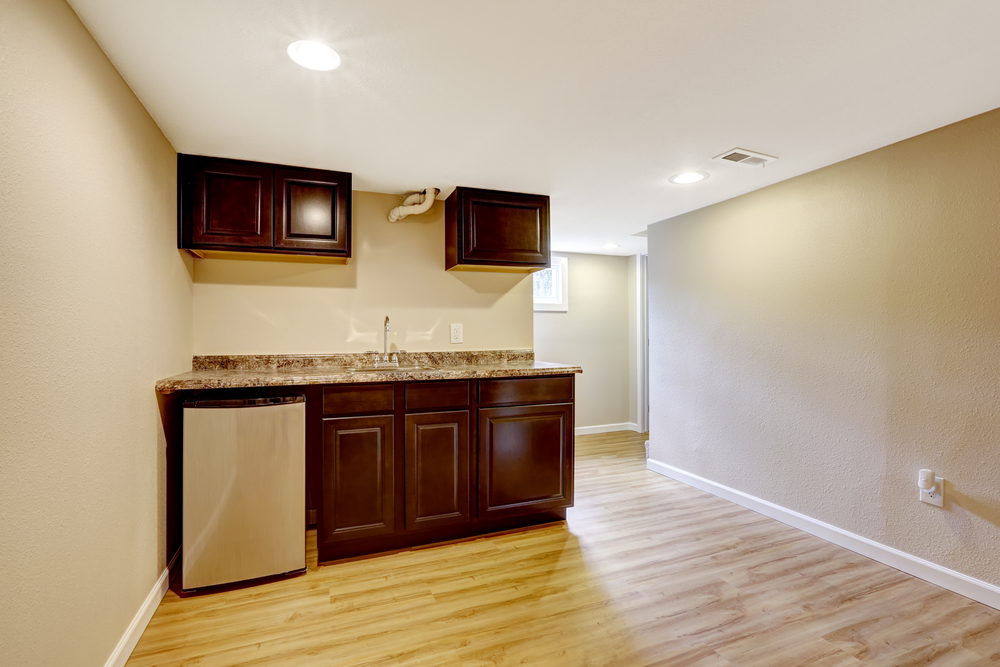
Real Estate Investing in GTA and Surrounding Areas
Are you keen on diving into the world of real estate investments? Welcome to Your Complete Guide to Real Estate Investing in GTA and Surrounding Area. Whether you’re a seasoned investor or a newbie, this guide has something valuable for you.
Securing Your Investment
Unlike your primary residence, securing a mortgage for an investment property in the Greater Toronto Area (GTA) requires a minimum of 20% down payment. Only 50% of your rental income may be considered for mortgage qualifications. If you’re venturing into commercial properties, prepare for a larger down payment.
Pro Tip: Consult mortgage brokers specialized in real estate investments. Their expertise could streamline the mortgage process.
Tax Implications
Remember, rent money is income and subject to income tax in Canada. Any appreciation in property value will incur capital gains taxes. It’s wise to consult your accountant to navigate the complex tax landscape.
Key Metrics for Real Estate Investing in the GTA
Real estate investments are a marathon, not a sprint, demanding clarity of objectives from the onset. Whether you’re aiming for consistent cash flow, long-term appreciation, or the steady accumulation of equity, each target brings its unique considerations into play.
Take cash flow, for instance, the heartbeat of investment properties, indicating the income left after settling all overheads. Picture a refined duplex in the GTA with a $950,000.00 tag, offering two units at a combined rent of $6,000 monthly. After accounting for monthly costs like mortgage payments, property taxes, maintenance, and insurance, which amount to $4,500, the net cash flow stands at a healthy $1,500 per month. This translates into an annual surplus of $18,000, bolstering your investment portfolio.
In assessing investment returns without the influence of financing, the capitalization rate, or cap rate, is indispensable. For example, a high-end townhome in Mississauga, with a market value of $1,200,000, generates a yearly net operating income of $72,000 after expenses. To find the cap rate, divide this income by the property’s value, revealing a cap rate of 6%, an insightful figure for investors gauging potential earnings.
The return on investment (ROI) encompasses overall investment efficacy, weaving together cash flow, mortgage principal reduction, and property value appreciation. Consider a tastefully updated Victorian house in Brampton valued at $1.1 million. With an annual cash flow of $24,000, a mortgage paydown of $8,000, and an appreciation of $55,000 over the year, the total gain is $87,000. This return, when juxtaposed with the initial investment, presents an ROI of approximately 7.9%, a robust indicator of investment health.
Options for Real Estate Investing in the GTA
-
New Construction
New construction refers to properties that are freshly built and not previously occupied, ranging from houses and condos to commercial buildings. This sector includes properties sold during or before construction, allowing buyers to customize details and benefit from modern designs and energy efficiencies.
-
- Advantages:
- Modern Amenities: New constructions come with the latest design trends and modern amenities which are attractive to tenants and can command higher rents.
- Less Maintenance: Newer buildings typically require less maintenance in the first few years, reducing the investor’s overhead costs.
- Warranty Benefits: New constructions often come with warranties that can protect investors from immediate, unforeseen expenses.
- Energy Efficiency: They are usually more energy-efficient, providing cost savings and appeal to environmentally conscious tenants.
- Pre-Construction Deals: Investors can often purchase at pre-construction prices, which can be lower than market value once the project is completed.
- Challenges:
- Longer Wait for ROI: The return on investment can take longer as you may have to wait for construction to be completed before you can rent out the property.
- Construction Delays: New constructions are prone to delays which can postpone the potential income period.
- Market Changes: Market conditions can change during the construction period, potentially affecting the value of the property upon completion.
Hidden Costs: There may be additional costs not accounted for initially, such as upgrades, design changes, and new property assessments.
- Advantages:
Investing in new construction offers potential value appreciation from the initial purchase to project completion, though it carries risks such as construction delays, market fluctuations, and mortgage rate hikes that could impact the property’s worth upon completion.
-
Income Properties
Income properties in Ontario are real estate assets purchased primarily to generate a steady stream of income, typically through renting out the property to tenants. These properties can be single-family homes, multi-family residences like duplexes and triplexes, or even larger apartment buildings. The rental income collected is used to offset costs such as the mortgage, property taxes, and maintenance expenses, and ideally provides a profit margin for the owner.
-
-
- Advantages:
- Cash Flow: Properly managed, these properties can offer a consistent source of income.
- Appreciation: In addition to the rental income, you may also benefit from the property appreciating in value over time.
- Tax Benefits: Certain expenses related to property upkeep and management are tax-deductible.
- Diversification: Real estate can serve as a good investment diversification strategy.
- Challenges:
- High Initial Costs: Buying an income property often requires a significant initial investment.
- Ongoing Maintenance: Property upkeep can be time-consuming and expensive.
- Market Risks: Rental rates and property values are subject to market conditions, which can fluctuate.
- Tenant Risks: Bad tenants can result in unpaid rents and property damage.
- Advantages:
-
Investing in income properties in Ontario can be a lucrative venture, but it requires thorough research and possibly consultation with professionals in real estate and finance. Whether you’re looking at a single rental unit or a multi-family complex, understanding the local market conditions, laws, and financials is key to turning a profit.
-
Flipping
Flipping real estate refers to the practice of purchasing properties at a lower price, renovating them, and then selling them at a profit in a relatively short time frame. Here are the advantages and challenges of this investment strategy:
-
- Advantages:
- Quick Profits: If done correctly, flipping can result in a significant profit in a relatively short amount of time.
- Value Addition: Renovating a rundown property can add significant value, and you have control over the extent of the improvements and finishes.
- Market Knowledge: It provides an excellent opportunity to learn and understand the real estate market and hone negotiation skills.
- Tangible Asset: You are investing in a physical asset, which, unlike stocks, you can actively improve with renovations.
- Fulfilment: Transforming a neglected property into a desirable home creates a sense of satisfaction and accomplishment.
- Challenges:
- Capital Intensive: Flipping requires substantial upfront capital not only to purchase the property but also to cover renovation costs, utilities, taxes, and other carrying costs.
- Market Risks: The market may decline between purchase and sale, reducing potential profits or even causing a loss.
- Unexpected Costs: Renovations often uncover unexpected issues that require additional time and money, eating into profits.
- Time-Consuming: Flipping is labour-intensive and requires a significant time investment to oversee renovations and the sales process.
- Tax Implications: Profits from flipping are typically taxed at a higher rate than long-term investments because they are considered regular income.
- Advantages:
Flipping can be a lucrative real estate investment strategy, but it’s important to enter into it with a clear understanding of the risks and challenges, as well as the potential rewards. It requires a combination of market knowledge, renovation skills, and the ability to withstand the financial pressures that come with carrying and improving a property.
-
Mixed-use
Mixed-use properties are real estate developments that combine different types of uses within a single building or complex. These uses typically include a mix of residential, commercial, and sometimes even industrial components. The aim of mixed-use development is to create a space where people can live, work, and enjoy leisure activities all in one place. Here are the key components typically found in mixed-use properties:
-
- Residential: This portion includes living spaces, ranging from apartments and condos to townhouses and lofts. These residential units are often situated on the upper floors of a building, above the commercial or retail spaces.
- Commercial: The commercial spaces in mixed-use developments are usually on the lower floors and can include offices for businesses and professionals. These spaces might house everything from startups to established corporate branches.
- Retail: Retail components may include shops, restaurants, and services that provide convenience for the residents living within the development as well as attracting consumers from the surrounding areas.
- Entertainment/Recreation: Some mixed-use properties feature entertainment and recreational facilities like cinemas, gyms, and parks, adding to the attractiveness of the development.
- Public Spaces: It’s common for mixed-use developments to include open, public areas such as plazas, walkways, or courtyards that facilitate community interaction and events.
The idea behind mixed-use properties is to reduce the distances people need to travel for different aspects of their daily lives, potentially decreasing the reliance on vehicles and increasing walkability. This model encourages a community-oriented environment and aims to boost the quality of life for residents and visitors.
-
- Advantages:
- Diversified Income Stream: Mixed-use properties often provide multiple types of income, such as residential rent and commercial lease payments, offering a buffer if one market falters.
- High Demand: Properties that combine residential living with retail, office, or other commercial uses are increasingly popular in urban areas, often leading to lower vacancy rates.
- Location Advantage: These properties are typically located in prime areas, benefiting from high foot traffic which is attractive to commercial tenants.
- Potential for Appreciation: Mixed-use buildings in developing areas can significantly increase in value as the neighbourhood becomes more established.
- Community Focal Point: They can become community hubs, leading to stronger tenant retention and investment stability.
- Challenges:
- Complex Management: Managing residential and commercial tenants simultaneously can be challenging due to the differing needs and legalities involved.
- Higher Initial Costs: The purchase price and maintenance costs for mixed-use properties can be higher compared to purely residential units.
- Financing Hurdles: Loans for mixed-use properties can come with more stringent requirements and higher interest rates due to perceived risk.
- Zoning and Regulations: Navigating zoning laws and regulations for both residential and commercial use can be complex and time-consuming.
- Market Sensitivity: Commercial spaces can be sensitive to economic downturns, affecting the stability of the investment.
- Advantages:
Investors and developers are often attracted to mixed-use properties because they can appeal to a wide range of tenants and consumers. They also tend to be located in strategic, high-traffic areas, which can be beneficial for the commercial and retail components. Moreover, having a diverse set of uses within one development can provide a more stable income stream, as the different components may peak at different times, providing financial balance during economic fluctuations.
-
Investment Condominiums
Investment condos attract investors due to their lower maintenance responsibilities, with the added potential for cash flow and value increase.
-
- Advantages:
- Maintenance: Managed by the condo association, hence less personal involvement.
- Amenities: Facilities like gyms and pools enhance rental appeal.
- Location: Typically central, bolstering rental and resale prospects.
- Cost of Entry: Generally more affordable than multi-unit properties.
- Challenges:
- Condo Fees: These can diminish profit margins.
- Governance: Association rules must be adhered to by you and your tenants.
- Appreciation Pace: Tends to be slower than single-family homes.
- Tenant Risks: Non-payment and property damage are potential concerns.
- Advantages:
Investment condos may be apt for those starting out or preferring a passive role.
Strategizing Your Investment Approach
Tapping into real estate investment as a landlord might not align with everyone’s lifestyle or preferences. For those who prefer not to be involved in the day-to-day management, there’s an alternative: enlisting a property management service. These services take on the tasks of a landlord, from tenant screening to maintenance calls, for a typical fee of about 6-10% of the property’s monthly rental income. This option offers a balance between investment ownership and personal time commitment, ensuring your property is professionally managed while you focus on other endeavours.
Conclusion
The GTA’s real estate investment arena is replete with opportunities that cater to a range of preferences, from straightforward condos to exciting house flips, and diverse mixed-use properties that promise multiple streams of income. At the heart of these opportunities is the expertise that the Keith and Françoise Real Estate Team brings to the table. Our profound market insight and unwavering commitment to your fiscal growth are the cornerstones that enable us to back your informed and strategic investment decisions.
For tailored advice and an in-depth exploration of the market, getting in touch with the Keith and Françoise Real Estate Team is your essential next move. Allow us to help you fulfil your aspirations in real estate investing in the GTA, leveraging our steadfast expertise and zeal.


